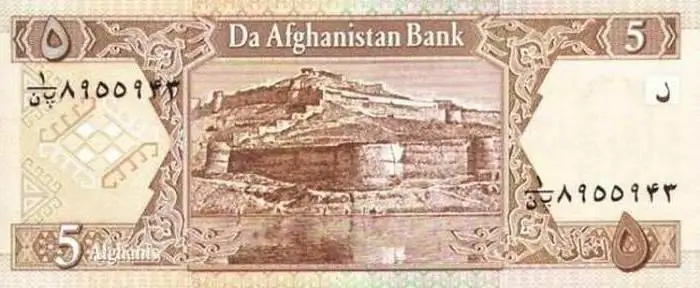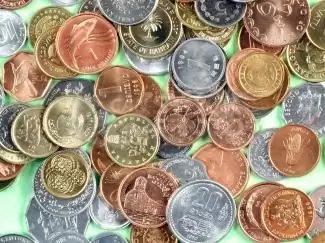2026 Author: Howard Calhoun | [email protected]. Last modified: 2025-01-24 13:10:41
To date, the official currency of Slovakia is the euro. But back in 2009, the Slovak crown was used on the territory of the state. Slovakia became independent in 1993, and at the same time the national currency was put into circulation. It was used until the transition of the state to the European currency and joining the so-called eurozone.
History of Slovak currency
Starting from the 11th century, the Slovak state was part of Hungary. It is not surprising that the first monetary unit in this country was the Hungarian forint. From 1867 to 1918, Slovakia was part of the Austro-Hungarian Empire and Austrian guilders were used in circulation on its territory. This continued until 1892, when Austro-Hungarian crowns were put into circulation.
After the demise of the Austro-Hungarian Empire in 1918, a united state was formed - Czechoslovakia. A new monetary unit was introduced into circulation, which was named the Czechoslovak krone. Already in 1938, as a result of the Munich Agreement, or, as it is also called, the "Munich Pact", Czechoslovakia was dismembered. Slovakia became a separate state under the control of Nazi Germany. In 1939 incirculation was launched own national currency of Slovakia - the Slovak krone.

Use your own currency
It will be worth noting that at first the new currency was the old Czechoslovak crowns with the inscription “Slovak state” applied in a printed way. Subsequently, the Slovak krone was called the state tickets of the Slovak Republic. In the last period of its circulation, the currency was called the banknote of the National Bank of Slovakia. At that time, the exchange of Czechoslovak money for new crowns was carried out in a ratio of one to one. The Slovak currency was pegged to the German mark at a rate of ten to one. That is, for ten Slovak crowns you could get one Reichsmark.
Slovak currency after the end of World War II
What was the currency of Slovakia after the end of World War II? The Czechoslovak state was restored, and Slovak crowns began to be withdrawn from free circulation. They were replaced by a common monetary unit - the Czechoslovak krone. And only after Slovakia gained independence and sovereignty in 1993, the Slovak crown received a new life. As a monetary unit of the young state, it was used for 16 years. At that time, the exchange of the Slovak crown for the Czechoslovak was carried out at the rate of one to one. The Slovak krone in the last period of its existence had the international designation Skk. One crown consisted of one hundred hellers. Coins in denominations of ten, twenty and fifty hellers were used in circulation, andalso one, two, five and ten crowns.

The National Bank of Slovakia issued banknotes several times. So, the first issued banknote of the Slovak national currency was a denomination of 50 crowns. It entered circulation on August 29, 1993. Subsequently, four more denominations were issued. The first issue ended in 1995. Then banknotes in denominations of two hundred and five hundred crowns came into circulation. The currency of Slovakia to the euro was modified several more times. So, new banknotes were issued in 1996, 1999 and 2000.
Introduction of the euro

In 2004 Slovakia joined the European Union. After that, the national government took a course to prepare the economy for entry into the eurozone. At the time of the transition to a common European currency, banknotes of the Slovak crown were used in denominations of twenty, fifty, one hundred, two hundred, five hundred, one thousand and five thousand. In 2009, the Slovak state completely switched to the euro and the Slovak crowns began to be withdrawn from circulation. The exchange ratio was 1 to 30, 13. That is, for 1 euro it was necessary to give 30 crowns and 13 hellers. Since 2009, the currency of Slovakia has been the euro.
Recommended:
Russian banknotes. Modern banknotes of Russia

Bank of Russia ticket is an official means of payment used throughout the Russian Federation. Only the Central Bank has the right to issue such banknotes. They are reliably protected from forgery by special signs of authenticity, the implementation of which uses modern technical solutions
France: coins of different historical periods

The formation and development of the monetary system of France was significantly influenced by the specifics of the historical process of the formation of this state. Until the middle of the XIV century, this country did not have its own banknotes, and Roman gold denarii coins were used in circulation. France, whose coins are presented in this material, how the republic was formed in the 18th century
The currency of Afghanistan: the history of the currency. Curious information about the currency

Afghan currency Afghani has almost a century of history, which will be discussed in this material
Maximum and average weight of a ram at different ages: an overview of different breeds

Sheep are very popular farm animals. Sheep are bred in almost all corners of the world, including in unfavorable natural areas. These animals were domesticated a very long time ago - in the 6th-7th centuries BC. In addition to unpretentiousness, farmers also attribute the ability to quickly gain muscle mass with low feed costs to the pluses of sheep
What is a currency? Russian currency. Dollar currency

What is the state currency? What does currency turnover mean? What needs to be done to make the Russian currency freely convertible? What currencies are classified as world currencies? Why do I need a currency converter and where can I find it? We answer these and other questions in the article

